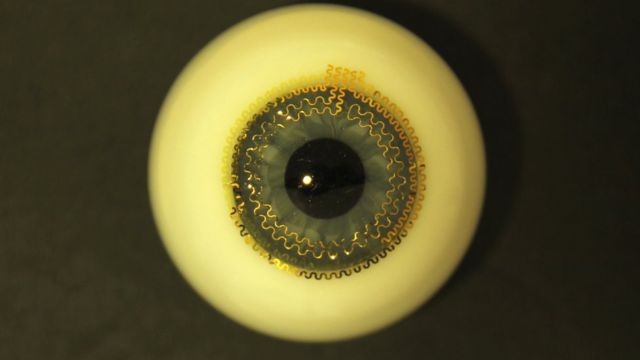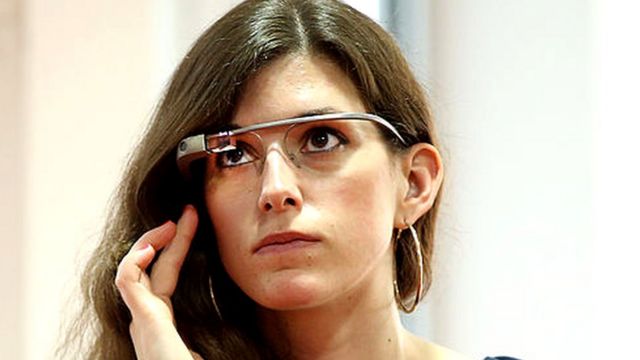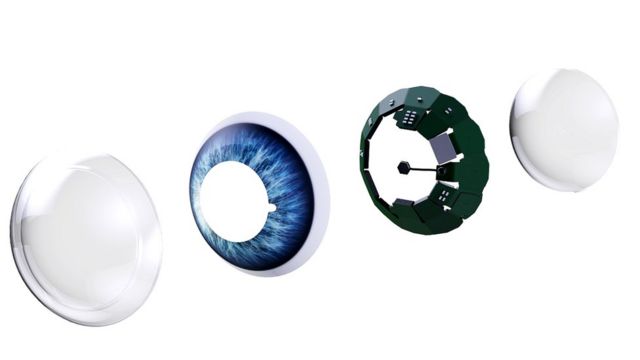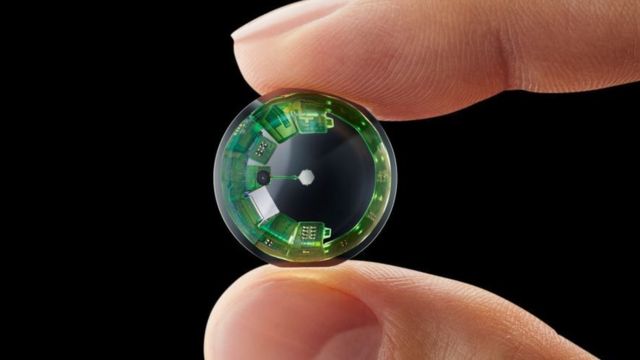The smart contact lens will be able to display the information you need right in front of your eyes. Pilot’s helmets that display necessary information on the visor, smart glasses that project computer images-we’ve seen it all in movies and in real life. Well, what if we take the next natural step and embed a computer screen directly into contact lenses?
“Imagine being a musician and having all the words and notes right in front of you,” said Steve Sinclair, a representative of Mojo Company. “Or you are an athlete, and the biometrics and other information you need is right at your fingertips. And that, he says, is just a small fraction of what their new lenses will be capable of.
According to the company’s designers, the new scleral lens (which covers not only the pupil but the entire white part of the eye) should not only perform its main function – vision correction – but also integrate a micro-LED display with all the necessary sensors and power source so that the image appears directly in the field of vision.

Mojo has already created a working prototype and is now testing and making final adjustments so that the lenses can be worn all day without taking them out. In the future, they hope to extend the wear time to up to a year. At the same time, other companies are developing smart lenses that will be able to track things like intraocular pressure, glucose levels, which is very important if the wearer has diabetes, and even detect cancer based on certain biomarkers. In the future, such lenses may also be able to deliver necessary medications directly to the eye. For example, scientists at the University of Saarland have developed a prototype of a smart contact lens with a photovoltaic element, a temperature sensor to diagnose possible corneal diseases, and a glucose sensor to monitor its concentration in the tear fluid.

Contact lenses developed at the University of Sarrira can track the health of the wearer. “We make them ultra-thin and can put a touch layer directly on the contact lens so that it touches the eye directly and has contact with the tear fluid,” says Sarreya Yunlun, a lecturer at Sarreya Yunlun University. “You will feel that they are more comfortable to wear because these lenses are more flexible, and thanks to the direct contact with the tear fluid, such a lens can provide more accurate information reading.”
However, despite the opportunities, there are still many obstacles to the development of smart lenses. One of the obvious difficulties is providing smart lenses with sufficiently powerful yet extremely miniature power sources. Mojo is still testing its product, but hopes that its lenses can be worn all day without recharging. “Essentially, the battery life depends on how often you use this feature, just like a smartphone or smartwatch,” Sinclair says.

Google’s smart glasses, launched in 2014, may have been ahead of their time, but they turned out to be a failure. A more serious concern has to do with privacy – as evidenced by the experience with Google Glass smart glasses, launched in 2014 and widely considered a failed venture. According to Daniel Loeb, senior analyst at Access Now, any video device that records secretly – and the new lenses fit that definition perfectly – potentially compromises the privacy of others. “With ‘smart’ glasses, you can at least signal to others that you are filming, for example with a flashing red light. But with lenses, it is hard to imagine where such a signaling device could be built in,” the analyst says. But that’s not all, because the privacy of users of “smart” lenses may also be at risk.

Smart lenses can only work if they follow your gaze, and that alone, along with other data, can reveal a lot of information about you that you may not want to share. “What if these devices collect and even share data about what or whom I look at, for how long, whether my heart rate increases, or if I sweat when I am questioned?” asks Loifer. “This kind of personal information can be used to make a variety of very problematic inferences about literally everything – from our sexual orientation to whether we are telling the truth when questioned.” Mojo responds that all data received on the smart lenses is securely protected and the wearer’s privacy is fully maintained.

Buyers of new smart lenses may also encounter a different type of problem that many regular contact lens wearers are familiar with. “With new lenses, you still need to follow basic hygiene rules,” reminds ophthalmologist Rebecca Rojas. We explain quickly, simply, and understandably what happened, why it matters, and what will happen next. The number of offers should remain: episodes.
The end of the story: Advertising Podcasts. “All contact lenses can pose a threat to your health if they are not properly fitted or cared for,” warns Columbia University ophthalmologist Rebecca Rojas. “I’m concerned about the possibility of improper use, lack of hygiene or wearing contact lenses for too long, which can lead to various complications, from irritation and inflammation to serious infections and other damage to the eyes.” Sinclair acknowledges that this can be a problem, considering that Mojo lenses are designed to be worn continuously for up to a year without removal. At the same time, he points out that because the lens is smart, it can be programmed to notify the wearer when it needs to be cleaned or even replaced. “And overall, you don’t put a smart contact lens like this on the market and expect everyone to want to use it right away,” Sinclair points out. “Of course, it will take some time, just like any other new product. But I think all eye-related products will eventually have the ‘smart’ prefix.”

